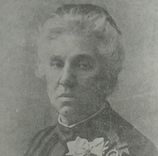Crafts Movement in the Habsburg Lands and Beyond
The women’s crafts movement emerged in the second half of the nineteenth century as an organized effort to professionalize women’s manual work. Its activists typically combined a far-reaching vision of the transformation of women’s roles in society with hands-on measures designed to help women secure a stable income. Activists established and ran schools, vocational courses, workshops, exhibitions, and charity markets. From the very beginning, the movement brought together women from different social classes, though not on equal terms. Mainly middle-class women led the associations, while working-class women were more often the beneficiaries of training, welfare measures, and placement services. This cross-class dynamic defined the movement, creating opportunities for cooperation and exposing persistent inequalities.
In the Habsburg lands, such associations focused on the garment and textile industries – sectors in which women employees were historically concentrated. In Prague, the Czech Women’s Industrial Association, founded in 1871 by Karolina Světlá and Eliška Krásnohorská, established a school offering training in subjects ranging from languages and business to drawing, engraving, and sewing. Over the course of 25 years, more than 13,000 students attended the school, with almost half exempted from paying fees and more than one-third hailing from cities, towns, and villages outside of Prague. The association maintained an employment agency that placed hundreds of women in jobs. The initiative was supported financially by association members, local authorities, and private donors, and the school employed former students as teachers and clerks, reinforcing the idea of a self-sustaining female professional environment.
Elsewhere in Cisleithania, German-speaking women formed parallel associations. In Brno, the Women’s Industry Association was founded in the early 1870s in response to what contemporaries described as the “starvation wages” of women workers who lacked qualifications. Vienna, the centre of both the monarchy and its garment industry, saw early, dynamic growth in women’s craft schools. Already by 1861, thousands of girls were enrolled in industrial schools teaching handicrafts that were often run by private individuals or women’s groups. The Vienna Women’s Industry Association, founded in 1866 by Helene von Hornbostel, Iduna Laube, and others, offered tailoring, embroidery, and laundry courses, and it operated sewing parlours that trained women and produced garments for sale. In 1906/7, over 700 women attended the association’s schools; some of these institutions offered students free tuition, though courses for fee-paying and non-fee-paying students were segregated. A Jewish women’s group, the Girls’ Support Association, was founded in 1867. The authorities requested that the association focus on free education for only “Israelite girls”. It extended welfare support through stipends and meals. Here too, vocational training stood at the centre of the organization’s programme, but ethnic and denominational divisions constrained how such schools operated.
Similar initiatives appeared across Central and Eastern Europe. In Budapest, the National Women’s Trade Association (founded in 1872) had, by the 1880s, increasingly focused its attention on lower-class women, aiming to qualify “poor and abandoned women for work”. It combined vocational training with economic ambitions in the hopes that this would boost Hungary’s textile production in the face of competition from the Czech lands.
The Charitable Co-operative of Serbian Women from Novi Sad, founded in 1880, promoted education in both schools and the trades, and from 1886, the organization published the magazine Women’s World (Женски свет). The co-operative celebrated figures such as Savka Subotić, who her brought knowledge of handicrafts, hygiene, and childcare to peasant women through instruction and publications. Romanian associations in Transylvania, organized in “Women’s Reunions”, linked their support of handicrafts to the wider politics of Romanian nationalism and ethnic self-expression.
In Bulgaria, the Women’s Charity Organization “Constancy” established a school in Plovdiv in 1896. Beginning with short courses, the school gradually expanded to offer a full programme of professional training, including embroidery, drawing, mathematics, and hygiene. Over forty years, nearly 9,000 students attended the school, with more than half paying reduced or no tuition fees. Graduates were able to obtain the title of master craftsman through examinations at the Chamber of Commerce and Industry, reflecting the increasingly formal recognition of women’s vocational education. Yet the association was not free from criticism: in the early 1920s, communist women accused it of exploiting unpaid student labour and aligning itself with middle-class interests rather than working-class needs.
Across these different contexts, the women’s crafts movement was marked by common features and local variations. Middle-class women felt responsible for all members of the female gender. They created women’s spaces where women collaborated in education, training, and placement activities across the class divide. Fundamental class differences, however, were not questioned, even though for a few lower-class women, access to training and involvement in the crafts movement facilitated their upward social mobility. Through schools, workshops, and networks, the movement made the question of women’s labour a visible and recognized issue in the rapidly changing economies of Central and Eastern Europe.


